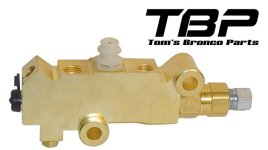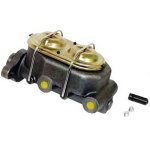Rustytruck
Bronco Guru
- Joined
- Feb 24, 2002
- Messages
- 10,875
The caliper is on the knuckle side of the rotor. The piston of the caliper pushes the pad against the rotor. The rotor has no place to go so the hydraulic fluid pushes the caliper back towards the knuckle. It pushes back and pulls the pad on the other side of the rotor into the rotor.
As the pads wear the piston pushes the knuckle side pad deeper into the rotor but on the other side of the rotor the pad needs to be pulled into the rotor further and that can only happen if the caliper can push closer to the knuckle.
Once the caliper hits the knuckle the caliper can no longer pull the pad on the other side of the rotor into the rotor. The piston will still push the knuckle side pad into the rotor since the piston in the caliper still moves towords the rotor. But with the caliper jambed into the knuckle you get no pull on the pad on the other side and you get no clamping force between the two pads against the rotor.
Just like taking off one brake pad from a bicycle rim you only get a little drag and no real braking force.
Now with a 4500 lb Bronco your only stopping with your rear brakes.
As the pads wear the piston pushes the knuckle side pad deeper into the rotor but on the other side of the rotor the pad needs to be pulled into the rotor further and that can only happen if the caliper can push closer to the knuckle.
Once the caliper hits the knuckle the caliper can no longer pull the pad on the other side of the rotor into the rotor. The piston will still push the knuckle side pad into the rotor since the piston in the caliper still moves towords the rotor. But with the caliper jambed into the knuckle you get no pull on the pad on the other side and you get no clamping force between the two pads against the rotor.
Just like taking off one brake pad from a bicycle rim you only get a little drag and no real braking force.
Now with a 4500 lb Bronco your only stopping with your rear brakes.
Last edited:












